Design


6 min

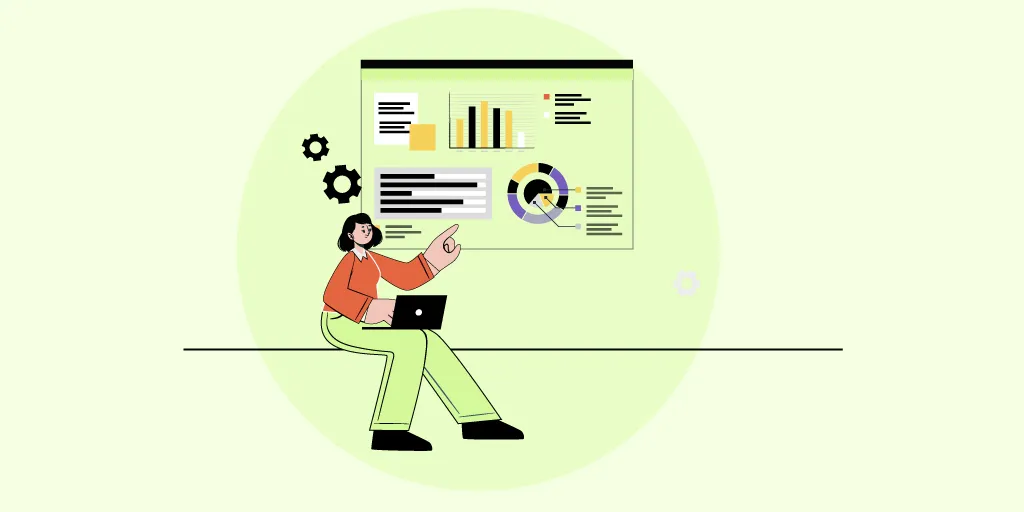
Here, we explore the essentials of UI/UX design strategies specifically customized for startups. Navigating the intricate landscape of user interface and experience design is pivotal for laying the groundwork for success. We explore innovative approaches to crafting a seamless and user-centric foundation that captivates and retains users. From user research methodologies to the art of prototyping, discover how startups can elevate their digital presence and set the stage for long-term success through strategic UI/UX design.

By Anupam Singh
17 Nov, 2023
Startups are constantly emerging in various industries, each vying for the attention and loyalty of users. A crucial factor that sets successful startups apart in this competitive environment is their ability to provide an exceptional user experience. This is where UI/UX design services play a pivotal role, and Quokka Lab's UI/UX expertise shines as a beacon of innovation.
In this blog, we will know the significance of UI/UX design in startup success and how Quokka Labs' expertise enhances the user experience.
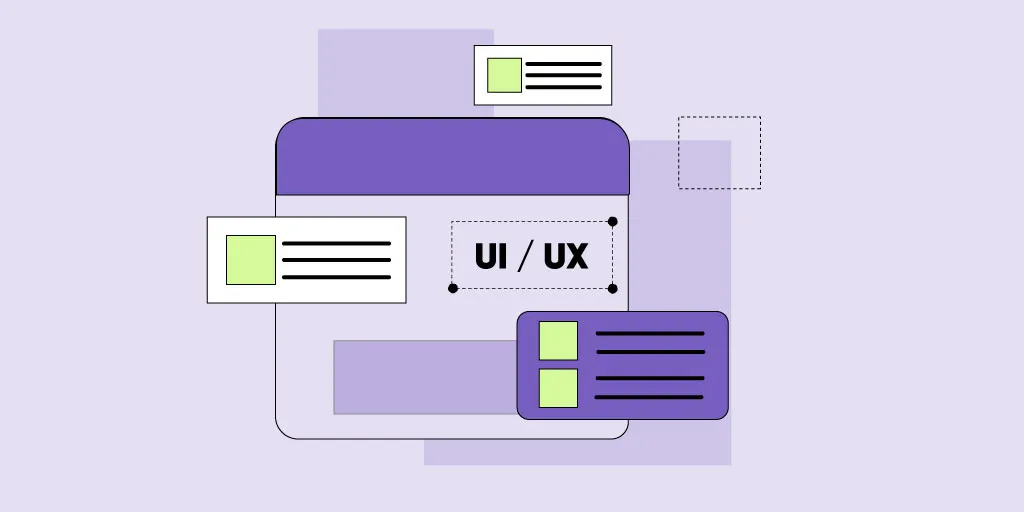 UI/UX design stands for User Interface (UI) and User Experience (UX) design, two critical aspects of creating digital products like websites, mobile apps, and software applications. These design disciplines focus on enhancing the user's interaction with a product and ensuring a positive and efficient experience.
UI/UX design stands for User Interface (UI) and User Experience (UX) design, two critical aspects of creating digital products like websites, mobile apps, and software applications. These design disciplines focus on enhancing the user's interaction with a product and ensuring a positive and efficient experience.
Visual Design: UI designers are responsible for the product's aesthetics, including layout, color schemes, typography, and iconography. They create visually appealing and consistent designs that align with the brand and the product's purpose.
Layout Design: UI designers determine how elements are arranged on the screen. They consider factors like user flow, hierarchy, and the placement of buttons, navigation menus, and content to make the interface intuitive and easy to use.
Interactive Elements: UI designers design buttons, forms, sliders, and other interactive components to ensure they are user-friendly and visually appealing. They also consider feedback mechanisms, such as hover effects and animations.
User Research: UX designers research to understand the target audience's needs, behaviors, and preferences. It may involve surveys, interviews, usability testing, and analysis of user data.
Information Architecture: UX designers create a logical structure for the product, ensuring users can easily find what they need. It includes designing navigation systems and organizing content in a meaningful way.
Wireframing and Prototyping: UX designers create wireframes and prototypes to visualize the product's layout and functionality. These early-stage designs help identify and address usability issues before development begins.
Usability Testing: UX designers conduct usability tests to gather user feedback and improve based on their insights. This iterative process helps refine the product's user experience.
UI/UX design is a holistic approach to creating digital products that are visually appealing, user-friendly, and effective in meeting the target audience's needs. Effective UI/UX design can increase user satisfaction, engagement, and overall product success. It's an ongoing process involving designers, developers, and stakeholders collaborating to continually refine and optimize the user experience.
Learn More:- The Role of UI/UX Design in Mobile App Success
 UI (User Interface) and UX (User Experience) are distinct but closely related aspects of designing digital products. Here are the key differences between them:-
UI (User Interface) and UX (User Experience) are distinct but closely related aspects of designing digital products. Here are the key differences between them:-
| UI Design | UX Design |
|---|---|
| UI design primarily focuses on the visual elements and the overall look and feel of the product. | It focuses on the product's overall experience, encompassing how users interact with it, how it meets their needs, and how it makes them feel throughout the user journey. |
| UI designers work on designing specific components of the interface, such as buttons, icons, menus, typography, color schemes, and layout. | UX designers are concerned with the entire user journey, including user research, information architecture, wireframing, prototyping, and usability testing. |
| UI designers ensure the interface is aesthetically pleasing, on-brand, and visually engaging. They aim to create a design that users find visually appealing and can interact with comfortably. | UX designers strive to create a seamless and meaningful user experience. They conduct user research to understand user needs and behaviors, design user flows, and ensure the product is easy to navigate and use. |
| The output of UI design includes style guides, mockups, and design assets that developers can use to build the user interface. | The output of UX design includes user personas, user journeys, wireframes, prototypes, and usability test reports. These materials guide the development of the product. |
| UI design deals with the tangible, surface-level aspects of the product that users can see and interact with directly. | It takes a holistic approach to the product, considering how every interaction, from the first visit to the final action, contributes to the overall user experience. |
In summary, while UI design deals with a product's interface's visual and interactive elements, UX design concerns the broader user journey and how the product meets users' needs and expectations. Both UI and UX design are essential for creating successful digital products, and they often work together collaboratively to ensure that an effect not only looks good but also functions effectively and provides a positive user experience.
UI/UX design can significantly impact the success of startups in several ways. Below mentioned are a few of them. Have a look.
Well-designed UI/UX enhances user satisfaction by providing a seamless and enjoyable experience. Users with a positive experience with a startup's product or service are likelier to continue using it and recommend it to others. This can lead to higher customer retention rates and organic growth.
Intuitive and user-friendly interfaces encourage users to engage more with the product. It can increase user interaction, longer session duration, and higher conversion rates. Engaged users are more likely to become loyal customers.
In crowded markets, startups often compete with established companies. A well-crafted UI/UX can be a strong differentiator, helping startups stand out by offering a superior user experience that competitors may lack.
A poor user experience, characterized by confusing navigation, slow loading times, or frustrating interactions, can lead to high churn rates. Startups can mitigate churn by investing in UX design that addresses pain points and solves user problems.
A user-friendly and aesthetically pleasing UI/UX can attract early adopters and enthusiasts willing to try new products and services. These early users can provide valuable feedback for iteration and help spread the word about the startup.
A well-designed UI/UX can reduce the need for customer support and troubleshooting. Users who can easily understand and navigate the product are less likely to encounter issues or seek assistance.
The design quality of a startup's user interface reflects its brand perception. A polished and professional UI/UX design can convey trustworthiness, competence, and a commitment to quality, which can be vital for gaining customer trust and investor confidence.
Startups that plan to scale their user base need a scalable UI/UX design. A well-structured UX can accommodate growth and changing user needs without significant redesigns, saving time and resources in the long run.
UX designers often conduct usability testing and gather user feedback, enabling startups to make data-driven product improvements. This iterative process can result in continuous enhancements that align the product with user expectations.
For startups with revenue models based on user engagement, subscriptions, or in-app purchases, a user-friendly UI/UX can lead to higher conversion rates and increased revenue.
UI/UX design plays a crucial role in shaping the success of startups by influencing user satisfaction, engagement, brand perception, and the ability to compete in the market. From the outset, investing in UI/UX design can lead to long-term benefits, helping startups establish a strong foothold in their respective industries and drive sustainable growth.
Learn More:- Leveraging Data and Analytics For Robust User Experience
(1.) Research and Discovery Phase
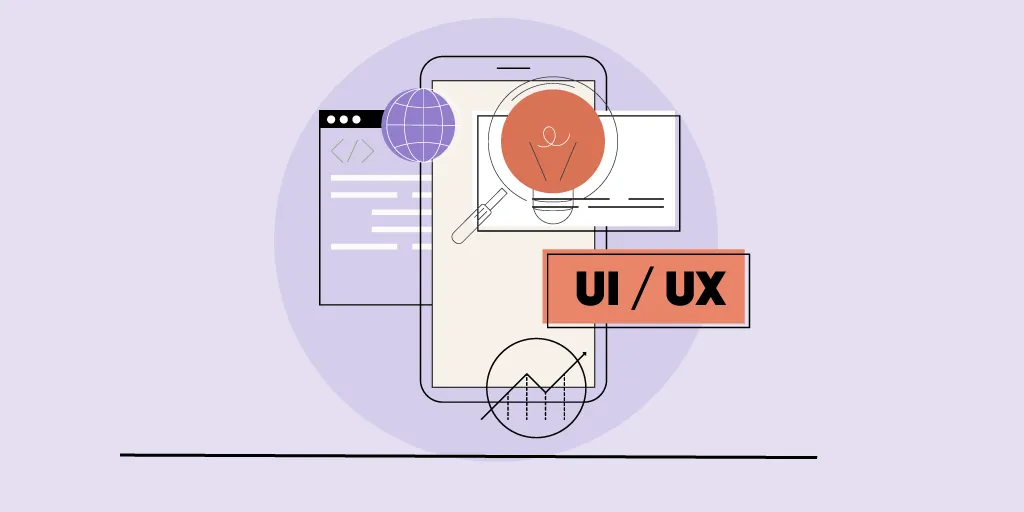
User Research: Begin by understanding the target audience. Conduct surveys, interviews, and user personas to understand their needs, goals, and pain points.
Competitive Analysis: Analyze competitors' products or websites to identify strengths and weaknesses in their UX designs.
Market Analysis: Understand industry trends, user behavior, and emerging technologies that may impact the design.
(2.) Define Objectives and Goals
Set Clear Goals: Define specific objectives for the UX design, such as increasing user engagement, reducing bounce rates, or improving conversion rates.
KPIs: Establish key performance indicators (KPIs) to measure the design's success based on the defined goals.
(3.) Ideation and Conceptualization
Brainstorming: Collaborate with stakeholders to generate ideas and concepts for the design. Consider user flows, wireframes, and prototypes.
Information Architecture: Create a sitemap or site structure that outlines the organization of content and navigation.
(4.) Wireframing and Prototyping
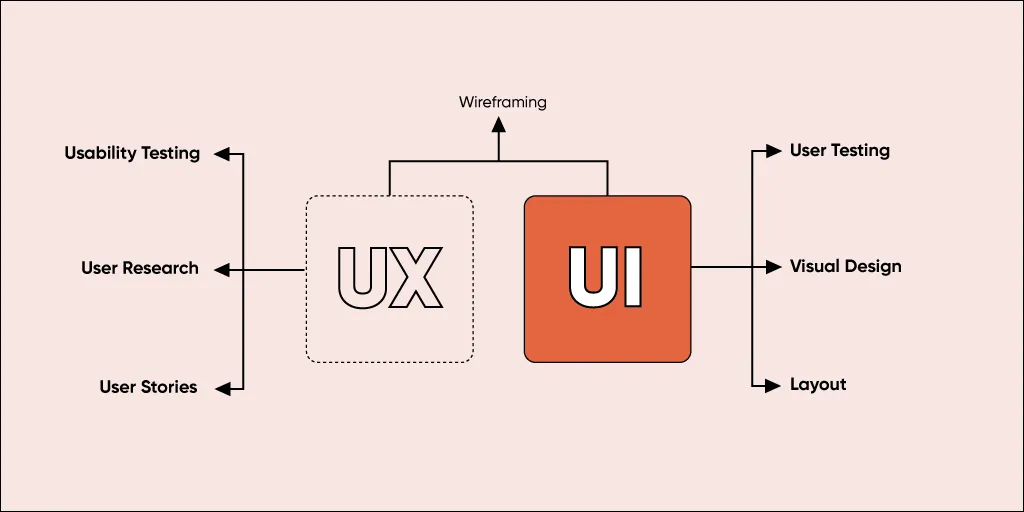
Wireframes: Develop low-fidelity wireframes to outline the layout, placement of elements, and overall interface structure.
Prototypes: Build interactive prototypes to simulate user interactions and test the design flow.
(5.) User Testing
(6.) Visual Design
Visual Elements: Design the visual elements, including color schemes, typography, icons, and graphics, in line with the brand's identity and user preferences.
High-Fidelity Mockups: Create high-fidelity mockups that showcase the final look and feel of the interface.
(7.) Development and Implementation
Collaboration: Work closely with developers to ensure the design is implemented accurately. Provide design assets and specifications.
Responsive Design: Ensure the design is responsive and compatible with various devices and screen sizes.
(8.) User Testing (Again)
Beta Testing: Conduct beta testing with a small group of users to identify any issues that may have arisen during development.
A/B Testing: Implement A/B testing to compare the performance of different design variations and make data-driven improvements.
(9.) Quality Assurance
(10.) Launch
(11.) Post-Launch Evaluation
Monitoring: Continuously monitor the design's performance using analytics tools and KPIs.
User Feedback: Encourage users to provide feedback and address any concerns or suggestions for improvement.
(12.) Iteration and Optimization
(13.) Maintenance and Updates
(14.) Documentation
This professional process for UI/UX designing emphasizes thorough research, user-centricity, iterative design, and continuous improvement to create an exceptional user experience that aligns with the objectives and goals of the project.
In the startup arena, where competition is fierce, UI/UX design plays a pivotal role in determining success. Startups that invest in providing exceptional user experiences through QuokkaLabs UI/UX expertise are better positioned to gain a competitive edge, build trust with users, and reduce customer acquisition costs. Ignoring UI/UX can result in lost opportunities, negative brand perception, and an increased churn rate. As the digital landscape continues to evolve, embracing emerging trends and technology like AI and machine learning is crucial for the future of startups.
Learn More:- The Impact of Visual Design On Overall User Experience
Why is UI/UX design crucial for startups?
UI/UX design is vital for startups as it directly influences user satisfaction, engagement, and the overall success of digital products. Crafting an intuitive and appealing design establishes a positive first impression, which is crucial for gaining and retaining users.
How can startups benefit from user research in UI/UX design?
User research helps startups understand their target audience, preferences, and pain points. This valuable insight guides the design process, ensuring the final product meets user expectations and addresses real needs.
What role do prototypes play in startups' UI/UX design process?
Prototypes act as interactive models of the final product, allowing startups to test and refine design concepts. They facilitate early feedback, reducing the risk of costly mistakes and ensuring the end product aligns with user expectations.
How does a user-centric approach contribute to the success of startups?
Prioritizing user needs and preferences in design leads to a more enjoyable and satisfying user experience. A positive user experience fosters customer loyalty that ultimately contributes to the long-term success of startups.
Are there specific UI/UX trends that startups should consider?
Yes, staying updated on UI/UX trends is essential. Current trends such as minimalistic design, micro-interactions, and dark mode can influence user perception and enhance the overall user experience for startups.
How can startups balance aesthetics and functionality in UI/UX design?
Striking a balance between aesthetics and functionality involves thoughtful design decisions. Prioritize user-friendly interfaces while ensuring the visual elements align with the brand identity, creating a harmonious blend of form and function.
What are the common challenges startups face in implementing UI/UX design strategies?
Common challenges include limited resources, time constraints, and the need for quick iterations. However, overcoming these challenges is crucial for startups to establish a strong foundation for success through effective UI/UX design.
Can UI/UX design impact a startup's brand image?
Absolutely. UI/UX design is a reflection of a startup's brand identity. A well-designed and user-friendly interface enhances the brand image, instils trust, and contributes to positive perceptions among users and potential customers.
What Is an API? A Developer's Guide to Application Integration in 2025
By Dhruv Joshi
5 min read
What Is a Push Notification and Why It Matters for Your App Strategy
By Dhruv Joshi
5 min read
Top React Native Development Companies to Build Scalable Apps
By Dhruv Joshi
5 min read
How Wearable Technology Is Driving Real-Time Data Experiences in Mobile Apps
By Sannidhya Sharma
5 min read

Design


6 min
It’s time to redefine the strategies to drive innovation and creativity, embracing the UI UX design trends of 2024. From minimalistic designs to immersive AR interfaces, VUI, empathy-centric design, and accessibility, this blog post guides you to thrive and get ahead of competitors. The convergence of aesthetics and functionality plays a vital role in boosting the visibility of apps and websites. Along with this, you must be updated with the latest trends in the industry. Reach out to our UI UX professionals to know more about the driving force behind the industry!

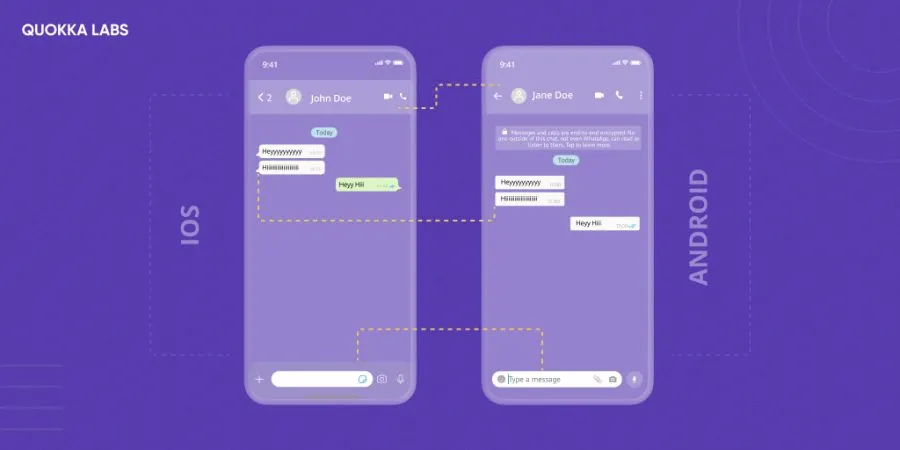
Design


3 min
The most basic difference between android and iOS app design for the button styles is that the buttons in iOS apps follow the flat design pattern, so consequently, they support the title case. However, the best Android app design follows Material Design, so inherently, they possess uppercase buttons styled with shadow.

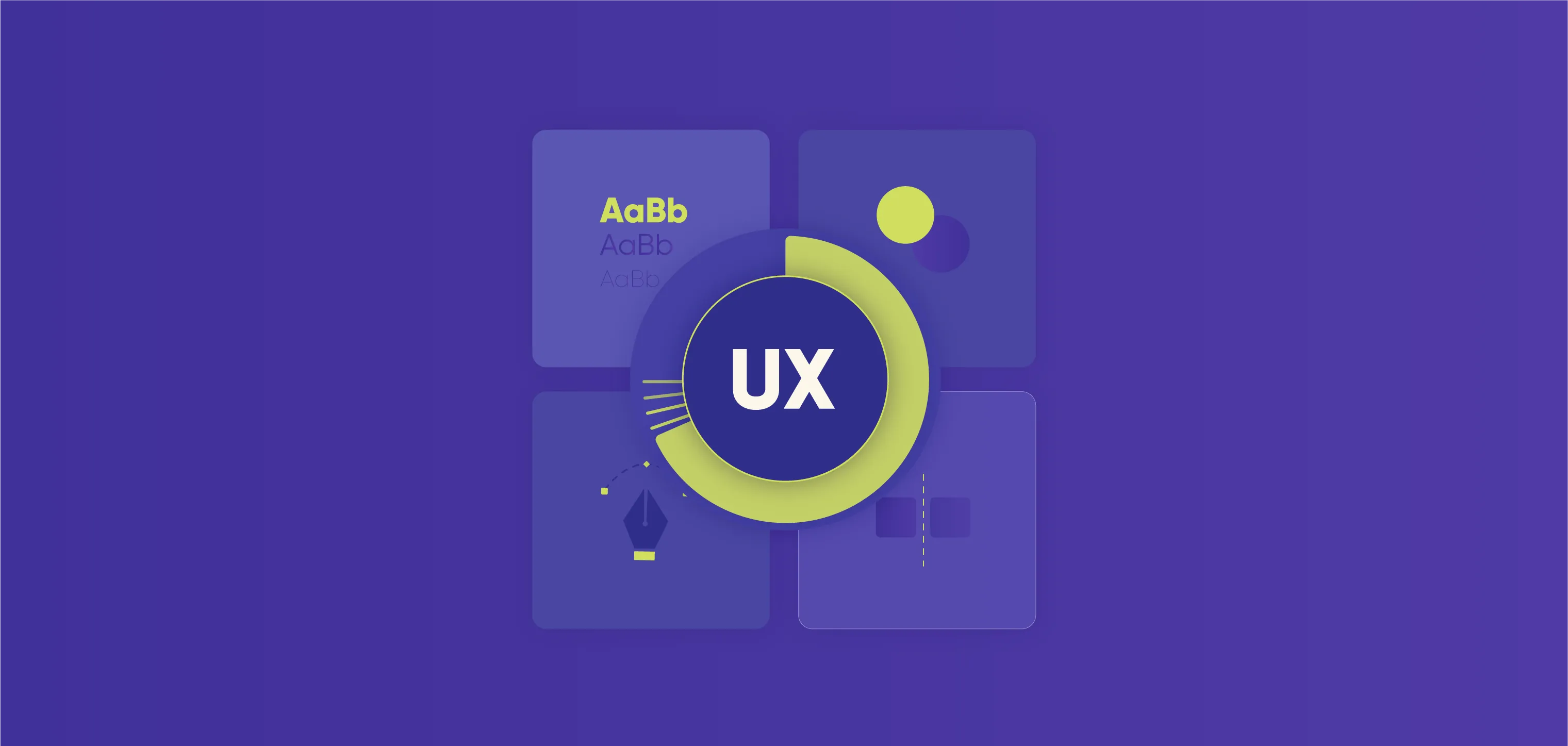
Design


6 min
Wondering about the impact of Visual Design on overall user experience? Explore the blog by Quokka Labs to know the impact of Visual design on user experience.


Feeling lost!! Book a slot and get answers to all your industry-relevant doubts